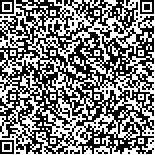| 引用本文: | 何伟,秦宁,王雁,何玘霜,孔祥臻,欧阳慧灵,徐福留.巢湖表层水体中DDTs农药的残留特征、来源解析与风险评价.湖泊科学,2011,23(3):325-333. DOI:10.18307/2011.0303 |
| HE Wei,QIN Ning,WANG Yan,HE Qishuang,KONG Xiangzhen,OUYANG Huiling,XU Fuliu.Residues, source identification, and risk assessment of DDTs in surface water from Lake Chaohu. J. Lake Sci.2011,23(3):325-333. DOI:10.18307/2011.0303 |
|
| |
|
|
| 本文已被:浏览 7357次 下载 4020次 |

码上扫一扫! |
|
|
| 巢湖表层水体中DDTs农药的残留特征、来源解析与风险评价 |
|
何伟, 秦宁, 王雁, 何玘霜, 孔祥臻, 欧阳慧灵, 徐福留
|
|
北京大学城市与环境学院地表过程分析与模拟教育部重点实验室, 北京 100871
|
|
| 摘要: |
| 2009年8月采集了巢湖河流及湖泊表层水体共15个样点,利用固相萃取-气相色谱-电子捕获检测器(SPE-GC-ECD)方法测定滴滴涕类(DDTs)农药的含量,分析了其残留特征、来源及风险.结果表明:1)巢湖丰水期DDTs含量范围为1.52-21.79ng/L,平均含量为9.98±4.73ng/L.2)DDT残留主要来自历史上工业DDTs农药的残留和其他o,p'-DDT/p,p'-DDT值较高的农药(如三氯杀螨醇)的使用,东部水源区主要是厌氧条件.3)物种敏感性分布评估模型(SSD)得到的全部物种的风险为8.3×10-15-2.1×10-18,各样点生态风险很小;DDT对所有物种、脊椎动物、无脊椎动物、鱼类、甲壳类和昆虫与蜘蛛的安全阈值分别为1.51、1.91、1.26、0.83、1.70和1.51;5%的水生生物物种受到影响时DDT超过毒性值的风险概率为24.5%,对脊椎动物、无脊椎动物、鱼类、甲壳类和昆虫与蜘蛛类的风险概率分别为15.6%、31.9%、17.5%、46.9%和18.7%.三种风险评价方式得到一致的结果,即巢湖DDT对无脊椎动物(如甲壳类)的生态风险大,而对脊椎动物(如鱼类)的生态风险小.4)用巢湖水饮用或者洗浴时,DDTs致癌风险均在百万分之一以下,风险很小;非致癌风险值均远远小于1,不会对人体产生明显非致癌健康危害. |
| 关键词: DDTs 来源解析 生态风险 健康风险 巢湖 |
| DOI:10.18307/2011.0303 |
| 分类号: |
| 基金项目:国家水体污染控制与治理科技重大专项项目(2008ZX07103-005-01);国家杰出青年基金项目(40725004);环保部公益项目(20100932);教育部博士点基金项目(20100001110035);国家自然科学基金重点项目(41030529)联合资助 |
|
| Residues, source identification, and risk assessment of DDTs in surface water from Lake Chaohu |
|
HE Wei, QIN Ning, WANG Yan, HE Qishuang, KONG Xiangzhen, OUYANG Huiling, XU Fuliu
|
|
MOE Laboratory for Earth Surface Process, College of Urban and Environmental Sciences, Peking University, Beijing 100871, P. R. China
|
| Abstract: |
| The contents of diehloro diphenyl triehloroethanes(DDTs) in surface water from fifteen sampling sites in Lake Chaohu were meusured by solid phase extraction-gas chromatograph-electron capture detecmr(SPE-GC-ECD).The DDTs residues, possible sources.as well as potential ecological and health risks were analyzed. The following results were obtained:1) the average content in the lake water was 9.98±4.73 ng/L, witIl the range of 1.52-21.79 ng/L.2) The sources of DDT were mainly from historical usage of technical DDTs pesticides and recent usage of other pesticides with larger ratio of o,p'-DDT to p,p'-DDT(such as dicofol).The eastern water source area was mainly under anaembie conditions.3) The water ecological risk to all species at various sample sites by Species sensitivity distribution(SSD) model was very low with the range of 8.3×10-15-2.1×10-8.Marsin of safety(MOSl0) of DDT for invertebrates, fish, crustaceans, and insects & spiders Was 24.5%, 15.6%, 31.9%, 17.5%, 46.9% and 18.7%, respectively. The risk assessment results by three methods were with good agreement, showing that the ecological risk of DDT to invertebrates(e. g. Crustaceans) was higherthan thatto vertebrates(e. g. fish), and that the DDT ecological risk was very low in Lake Chaohu.4)DDTs' carcinogenic risk was lower than 10-6.and its non-carcinogenic risk was far less than 1, implying that it would not cause significant carcinogenic and non-carcinogenic human health risk when using the lake water as drinking and bathing. |
| Key words: DDTs gource identification ecological risk healthy risk Lake Chaohu |
|
|
|
|